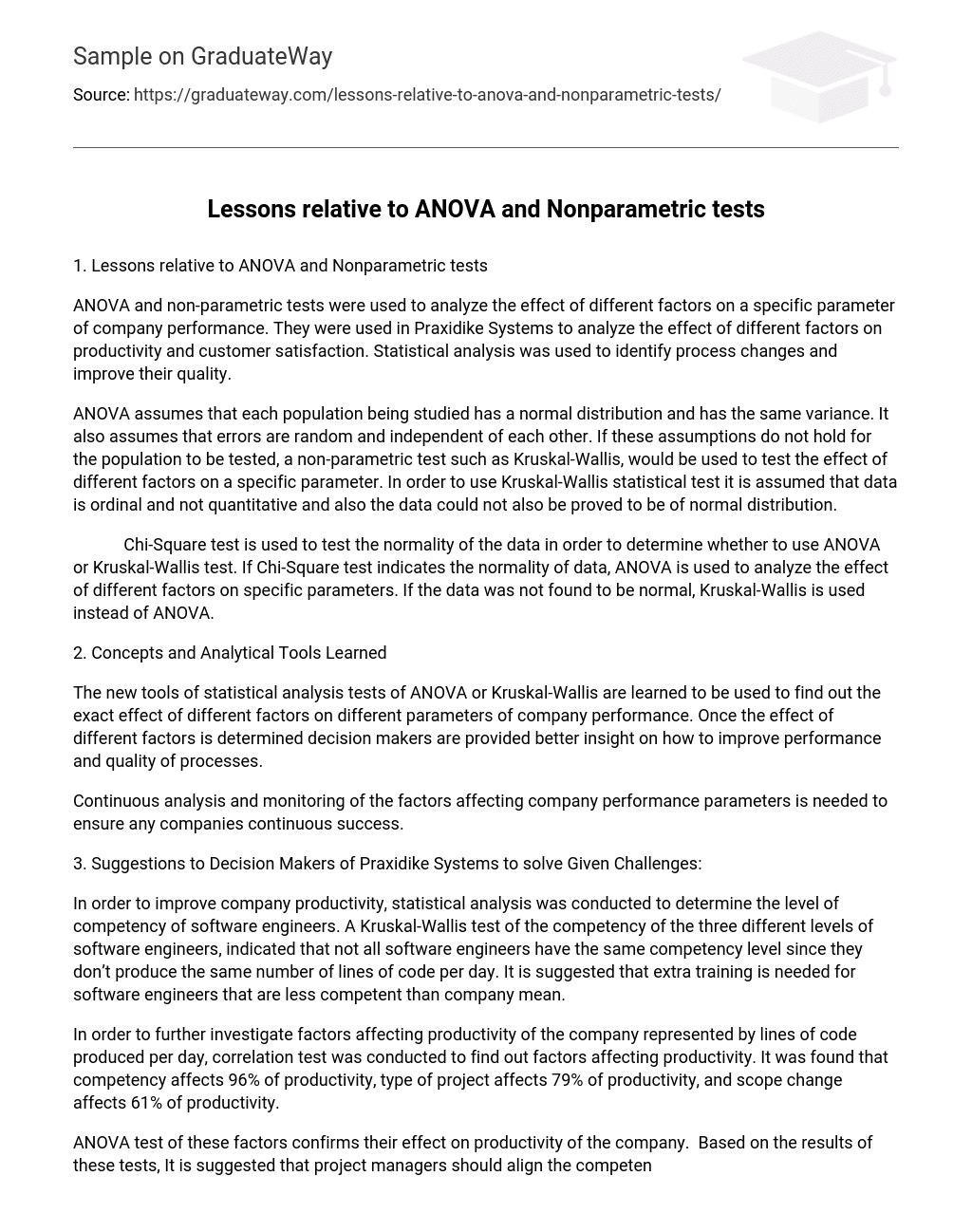1. Lessons relative to ANOVA and Nonparametric tests
ANOVA and non-parametric tests were used to analyze the effect of different factors on a specific parameter of company performance. They were used in Praxidike Systems to analyze the effect of different factors on productivity and customer satisfaction. Statistical analysis was used to identify process changes and improve their quality.
ANOVA assumes that each population being studied has a normal distribution and has the same variance. It also assumes that errors are random and independent of each other. If these assumptions do not hold for the population to be tested, a non-parametric test such as Kruskal-Wallis, would be used to test the effect of different factors on a specific parameter. In order to use Kruskal-Wallis statistical test it is assumed that data is ordinal and not quantitative and also the data could not also be proved to be of normal distribution.
Chi-Square test is used to test the normality of the data in order to determine whether to use ANOVA or Kruskal-Wallis test. If Chi-Square test indicates the normality of data, ANOVA is used to analyze the effect of different factors on specific parameters. If the data was not found to be normal, Kruskal-Wallis is used instead of ANOVA.
2. Concepts and Analytical Tools Learned
The new tools of statistical analysis tests of ANOVA or Kruskal-Wallis are learned to be used to find out the exact effect of different factors on different parameters of company performance. Once the effect of different factors is determined decision makers are provided better insight on how to improve performance and quality of processes.
Continuous analysis and monitoring of the factors affecting company performance parameters is needed to ensure any companies continuous success.
3. Suggestions to Decision Makers of Praxidike Systems to solve Given Challenges:
In order to improve company productivity, statistical analysis was conducted to determine the level of competency of software engineers. A Kruskal-Wallis test of the competency of the three different levels of software engineers, indicated that not all software engineers have the same competency level since they don’t produce the same number of lines of code per day. It is suggested that extra training is needed for software engineers that are less competent than company mean.
In order to further investigate factors affecting productivity of the company represented by lines of code produced per day, correlation test was conducted to find out factors affecting productivity. It was found that competency affects 96% of productivity, type of project affects 79% of productivity, and scope change affects 61% of productivity.
ANOVA test of these factors confirms their effect on productivity of the company. Based on the results of these tests, It is suggested that project managers should align the competency of software engineers to the complexity of the project and review project plan and account of scope changes at planning stages.
In order to improve client satisfaction of completed projects which varied from 55 to 90, correlation analysis indicated the strong effect of number of defects and schedule variance on customer satisfaction. It is suggested that project managers review project plans and effort estimation, implement a defect tracking system and review testing procedures.





